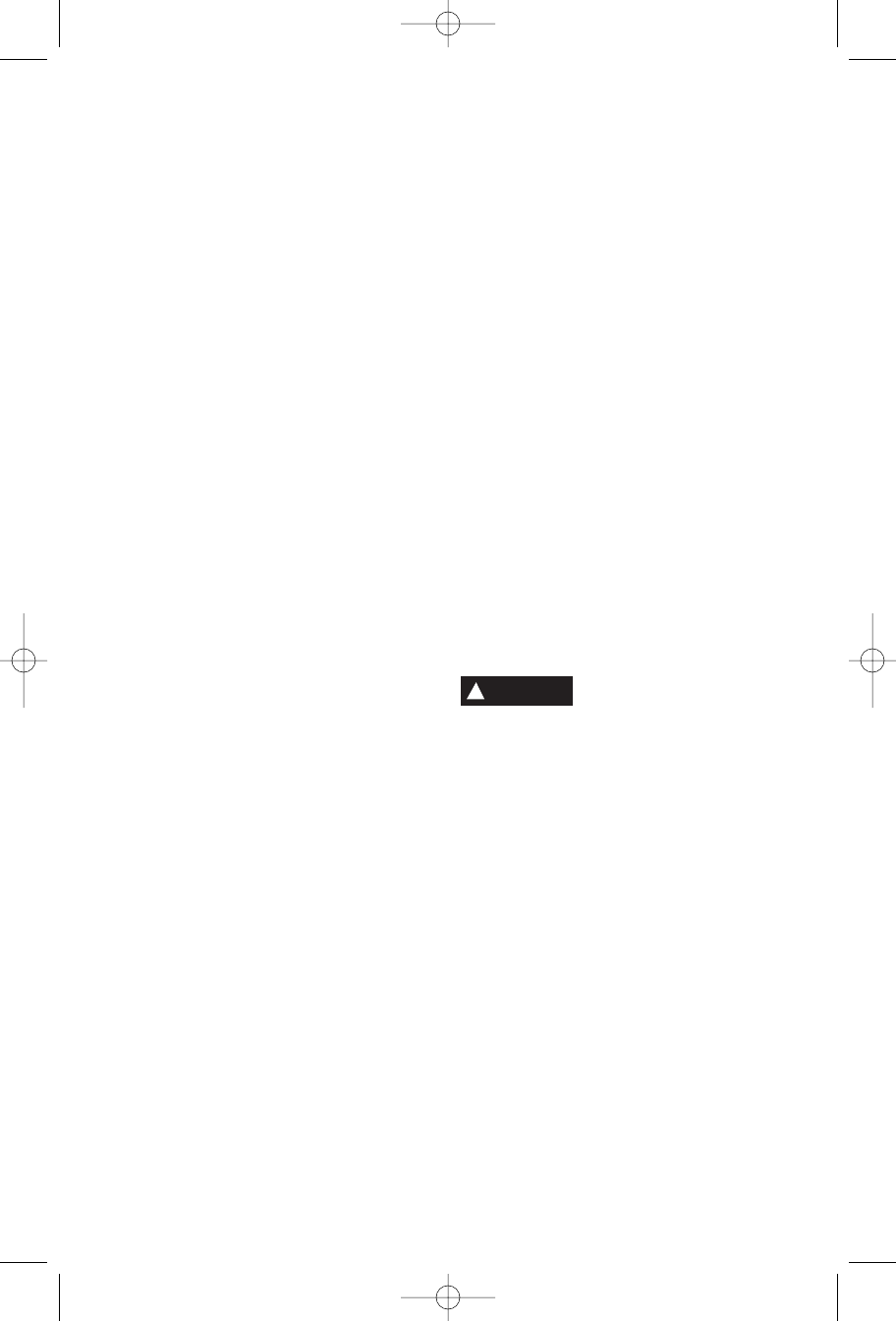
Always wear safety goggles or eye
protection when using this tool. Use a
dust mask or respirator for applications
which generate dust.
Use thick cushioned gloves and limit the
exposure time by taking frequent rest
periods.
Vibration caused by hammer-drill
action may be harmful to your hands and
arms.
Secure the material being drilled. Never
hold it in your hand or across legs.
Unstable support can cause the drill bit to
bind causing loss of control and injury.
Never leave the trigger locked "ON".
Before plugging the tool in, check that the
trigger lock is "OFF".
Accidental start-ups
could cause injury.
Position the cord clear of rotating bit. Do
not wrap the cord around your arm or
wrist.
If you lose control and have the cord
wrapped around your arm or wrist it may
entrap you and cause injury.
Position yourself to avoid being caught
between the tool or side handle and walls
or posts.
Should the bit become bound or
jammed in the work, the reaction torque of
the tool could crush your hand or leg.
If the bit becomes bound in the
workpiece, release the trigger
immediately, reverse the direction of
rotation and slowly squeeze the trigger to
back out the bit.
Be ready for a strong
reaction torque. The drill body will tend to
twist in the opposite direction as the drill bit is
rotating.
Do not grasp the tool or place your hands
too close to the spinning chuck or drill
bit.
Your hand may be lacerated.
Do not use the switch "Lock-ON" feature
in situations where drill bit binding is
likely. (For example: just before the bit is
ready to break through the material,
anytime when using a "Hole Saw", auger
bits........ etc.)
When the bit binds, the drill's
body will twist or kick-back in opposite
direction and the release of the trigger "Lock-
ON" may be difficult.
Be aware of the location and setting of
the switch "Lock-ON" button.
If the switch
is locked "ON" during the use, be ready for
emergency situations to switch it "OFF", by
first pulling the trigger then immediately
releasing it without pressing the "Lock-ON"
button.
When installing a drill bit, insert the shank
of the bit well within the jaws of the
chuck.
If the bit is not inserted deep
enough, the grip of the jaws over the bit is
reduced and the loss of control is increased.
Do not use dull or damaged bits and
accessories.
Dull or damaged bits have a
greater tendency to bind in the workpiece.
When removing the bit from the tool avoid
contact with skin and use proper
protective gloves when grasping the bit
or accessory.
Accessories may be hot after
prolonged use.
Check to see that keys and adjusting
wrenches are removed from the drill
before switching the tool "ON".
Keys or
wrenches can fly away at high velocity
striking you or a bystander.
Do not run the drill while carrying it at
your side.
A spinning drill bit could become
entangled with clothing and injury may result.
Some dust created by
power sanding, sawing,
grinding, drilling, and other construction
activities contains chemicals known to
cause cancer, birth defects or other
reproductive harm. Some examples of
these chemicals are:
• Lead from lead-based paints,
• Crystalline silica from bricks and cement
and other masonry products, and
• Arsenic and chromium from chemically-
treated lumber.
Your risk from these exposures varies,
depending on how often you do this type of
work. To reduce your exposure to these
chemicals: work in a well ventilated area, and
work with approved safety equipment, such
as those dust masks that are specially
designed to filter out microscopic particles.
-4-
!
WARNING
SM 2610958551 09-08 9/18/08 8:33 AM Page 4


















